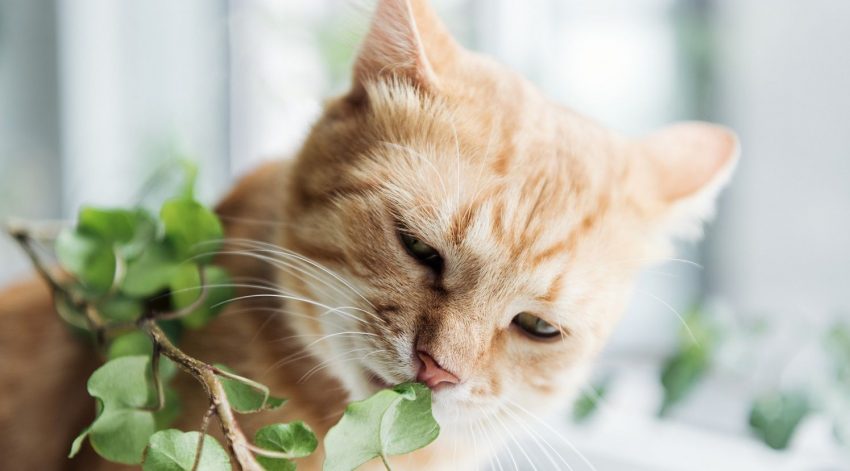Best Houseplants Safe for Cats & Plants to Avoid
Houseplants Safe For Cats
Is my plant toxic to my cat? It is a question that we often hear from concerned plant owners. This concern is certainly well-founded. Unfortunately, some plants are not safe for pets to eat. If they do eat these plants, your cat or dog will not immediately be fatal, but he or she can get very sick. To save our beloved four-legged friends this, we have compiled a list of plants that are safe for pets.
Which vegetables are toxic?
Many types of vegetables are dangerous for cats. Be especially careful with vegetables from the nightshade family such as tomato and eggplant. But onions, garlic and avocado are also toxic to your cat. In fact, the list of harmful vegetables is so long that you can better avoid vegetable food. As a snack you better give the cat unsalted fish or meat (raw or dried), but also cat milk or a lump with a high meat content are great treats.
Which plants are poisonous?
Cats prefer to avoid poisonous house plants because they give off a bitter taste. Moreover, most poisonous plants are only harmful when ingested in large quantities. But it is better to simply not bring poisonous plants into your home or place them in a safe place. Be especially careful with the following plants:
- azalea
- chrysanthemum
- ficus
- geranium
- holly,
- Christmas star
- ivy
- lily
- mistletoe
- daffodils
- yew,
- fir
- and most succulents and cacti.
Which house plants are safe?
There are many non-toxic houseplants such as:
- grass lily
- gerbera
- orchid
- palm species such as the dwarf palm, aerca palm
- ferns
1. Palm (Areca, Beaucarnea, etc.)
There are many types of palm trees, and almost all of them are non-toxic. The Cycas palm is unfortunately an exception to this and is therefore not safe for pets. For the other palms it is good news, because they are very popular indoor plants. Species such as the Areca, Washingtonia and Chamaedorea can be found in many living rooms, but also the Kentia palm, Dwarf palm and Rhapis are increasingly being chosen.
2 . Calathea
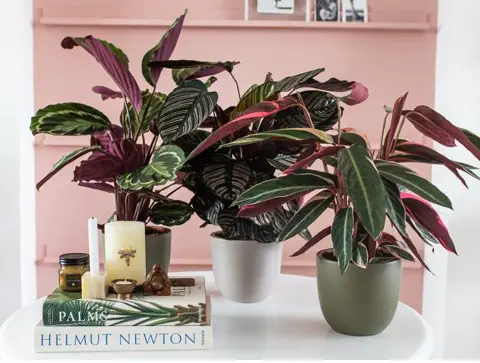
The Calathea is known for its beautiful large leaves. Animals find this a nice plant especially in the warm summer months because they can relax in the shade under the leaves.
3 . Bromeliad
A plant that is also safe for pets is the Bromeliad. For years a classic in Dutch living rooms, which is mainly due to the striking and colorful flower of the Bromelia. A nice plant to give your room a bright appearance.
4. Sailing
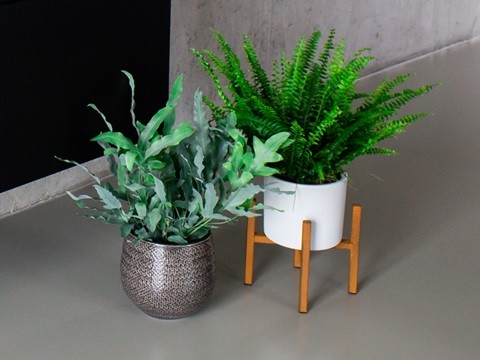
Ferns are plants that many people mainly know from the outside, but they are great house plants. They are very good at purifying the air and also ensure a higher humidity, all good for your health. And it is also not a danger to your pet’s health.
5. Grass lily
Also called ‘spider plant’ abroad. We find a name that fits better with the plant, because these countless leaves of this plant grow everywhere in between. A plant that is also ideal for cuttings, and is ideal for a house with dogs or cats.
6. Banana plant
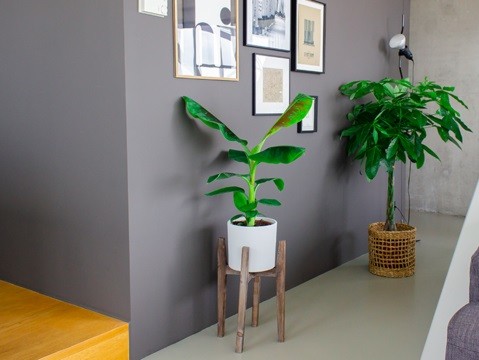
It would be very annoying if a plant on which food grows is itself toxic. The Banana plant, or Musa as it is officially called, is happy with that. This green jungle plant with its mighty leaves may look tough, but secretly has a weak spot for the furry four-legged friends in its environment.
7. Hoya fleshy or wax flower.
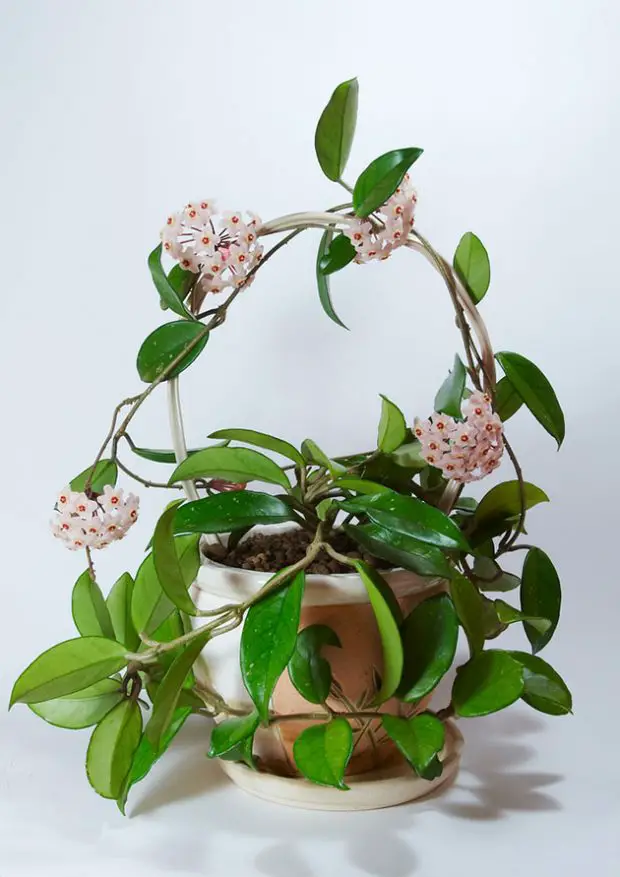
ShutterStock photo
A beautiful and small plant that, in addition to being safe for dogs and cats, is also very decorative, both for its green leaves, and the flowers it gives when it blooms.
8. Peperomia obtusifolia
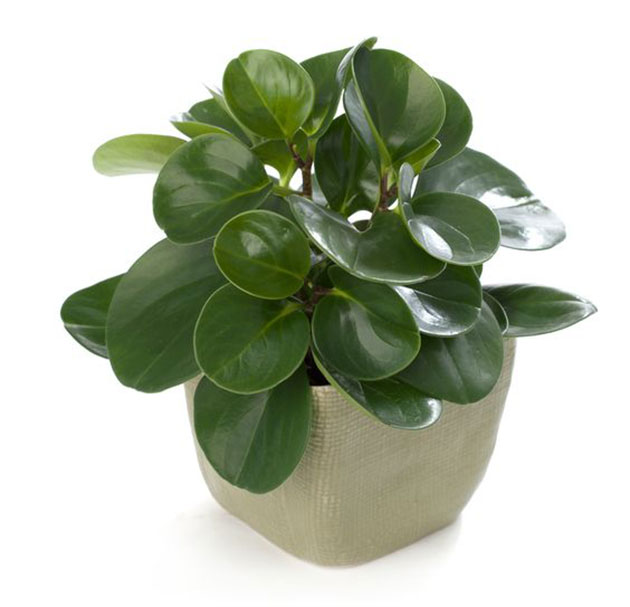
An indoor plant safe for animals and very, very easy to care for and maintain. Almost like the tongue of tiger or sansevieria.
9. You succulents
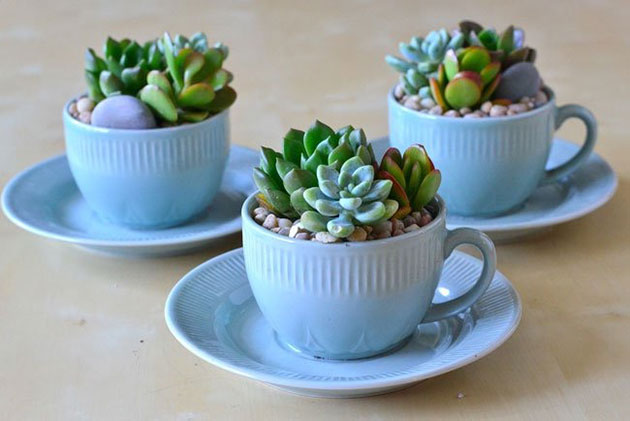
Photo Jenna Mcarthur
Luckily, succulents are also safe for pets; and I say luckily, since as you well know, there has been a boom with respect to this plant that has flooded all homes.
And here the list of safe plants for pets. To see all the safe plants there are and those that are not, we can visit the list published by ASPCA.
Which cats are at risk?
Most cats are picky eaters and careful what they eat, so poisoning is not common in cats. Kittens and young, investigating cats are generally more at risk, especially if these cats do not come outside. A (young) cat often starts to nibble plants out of boredom. Therefore, remove all poisonous plants from a cat that is trapped in a run or indoors.
A cat that comes outside usually has better things to do than nibble on plants. However, a free-running cat can accidentally ingest poisonous tree needles or seeds if, for example, they are stuck in their fur. When washing, the cat can then eat these needles or seeds.
A cat is not a herbivore!
Every plant, even (cat) grass, has an irritating effect in your cat’s gastrointestinal tract, which can cause the animal to vomit. However, if he gets the chance, your cat will love to keep nibbling on grass. If there is no grass, he turns to other, less suitable plants. He prefers to select tender stems and leaves and makes no exception for poisonous plants. The Dieffenbachia is especially dangerous for the cat.
Prevention at home
Remove all potentially dangerous house plants in the house to prevent any unnecessary risk. Especially kittens and cats that do not come outside are at extra risk. Below is a list of houseplants that are unsuitable for your cat.
Prevention outdoors
Outside it is more difficult to protect your cat from dangerous plants. A cat that walks around freely enters all kinds of gardens and it is impossible to protect your cat against all plants outside. You can at least try to reduce the risk by removing the most dangerous plants in your own garden and check with the neighbors to find out if there are many poisonous plants there. If necessary, write down the (Latin) names of those plants; this list may come in handy if your cat shows signs of poisoning.
When purchasing new plants, choose species that are safe for your cat. When gardening, never leave pruning waste or excavated plants in places where your pet can reach. Your cat may want to taste a bite out of curiosity. Vegetable juice in crushed stems is irritating and often toxic. Bulbs, roots and rhizomes are among the most toxic parts of many plants.
What are the signs of poisoning?
Consult a veterinarian immediately if your cat suddenly becomes unwell, frequently vomits, has severe diarrhea or has severe irritation of the skin and mucous membranes around the mouth and throat (red, swollen, blistering or rough skin). A cat that is listless and eats little or no food for a day or more can also be the victim of poisoning and needs help.
If your cat has eaten something that is potentially toxic, do not try to make him vomit. Take your cat to the vet and take a sample of the plant and if possible a name plate of the plant. This helps your veterinarian to start treatment as quickly as possible and to give you an antidote. Note the time of ingestion of the poisonous plant and a description of the symptoms that occur.
Skin irritation
People who gardening are fortunately more often only affected by skin irritation than by real poisoning. The contact with leaves, stems or sap of certain plants can cause itching or a hypersensitivity to sunlight that leads to skin burns. The same plants can cause blisters or mouth and gum irritation in your cat.
These symptoms sometimes lead incorrectly to the diagnosis of gum disease (gingivitis). Sneezing and eye problems can also result from contact with these plants. This type of physical reaction also occurs with contact with the leaves of all kinds of plants from the vegetable garden, such as the tomato plant, strawberry, rhubarb, parsnip, carrot, celery, pumpkin, zucchini and cucumber.
The geranium and primula leaves can also irritate the skin and mucous membranes. The leaves or sap of plants that are toxic when ingested can also cause irritation on contact with the skin. See the list below for an overview of plants with potentially irritating effects.
Poisonous plants for cats list
The list below gives an overview of plants that may be toxic or life-threatening when taken by your cat. Often the fruits or seeds in particular are harmful. Contact with certain plants on this list can cause skin irritation. These plants are marked with an asterisk (*). The list below includes plants that may also be known to you for their toxicity (for example, cherry cherry, with extremely poisonous berries), but also plants that you might not expect here, such as the daffodil (with a poisonous flower bulb).
As a cat owner you may be shocked by the large number of common plants in the list, but rest assured: many poisonous plants have a dirty, bitter taste that will deter your cat from getting a harmful amount of poison. Woody garden plants also pose a limited risk, your cat will be more likely to be seduced by a tender (poisonous) houseplant.
Houseplants
Alocasie
Amaryllis
Aphelandra
Apple of love, see Solanum
Caladium
Chrysanthemum, see Dendranthema *
Codiaeum
Croton, see Codiaeum
Cyclamen
Dieffenbachia *
Epipremnum aureum
Hyacinth
Hypoestes phyllostachya
Ilex
Star of Bethlehem, see Euphorbia *
Ivy, see Hedera *
Ragwort, see Senecio
mistletoe or mistletoe, see Viscum
Nerium oleander
Oleander see Nerium
Orange Boompje, see Solanum
Poinsettia, see Euphorbia
Senecio
Ferns
Fingers Boom, see Schefflera *
Vogel milk, see Ornithogalum
Wonderboompoort, see Ricinus
Zuidenwind Lelie, see Ornithogalum
Garden plants
Lilies are also toxic to cats.
Apricot, see Prunus armeniaca
Abrus precatorius
Aconitum *
Actaea
Aesculus
tagetes, see Tagetes
Agrostemma githago
Columbine, see Aquilegia
Aleurites
Allium
alocasia macrorrhizos
Alstroemeria *
Anagallis
Anemone
Aquilegia
arisaema
Arum, see Arum
Arum
Astragalus
Atropa
Avocado, see Persea americana
Azalea, see Rhododendron
Vinegar Boom, see Rhus *
Balsamic, see Impatiens
Bear’s claw or Giant hogweed, see Heracleum mantegazzianum
Wisteria, see Wisteria
Blood root , see Sanguinaria
Tansy, see Tanacetum
Bolderik see Agrostemma githago
Buttercup, see Ranunculus
Brem see Cytisus
Brugmansia
Bryonia
Buxus
Caesalpinia
Caladium
Caltha *
Catharanthus
Celastrus
Centaurea cyanus
Cestrum
Chistoffelkruid see Actaea
Chrysanthemum, see Dendranthema *
Clematis
Colchicum
Conium
Convallaria majalis
Cotoneaster
Cupressocyparis leylandii *
Cyclamen
Cytisus
Daphne *
Datura *
Delonix
Delphinium
Dendranthema *
Dicentra
Dictamnus
Foxglove
, see Datura * Dotter
flower, see Caltha *
Echium *
Oak, see Quercus
Essenice, see Dictamnus
Euonymus
Euphorbia *
Ficus
Flamboyant, see Delonix
Velvet tree, see Rhus *
Frangula, see Rhamnus
Fremontodendron *
Galanthus
Gaultheria
, see see
Heart, yellow See heart Linum
Capped calf’s foot, see Arisaema
Spotted shearling, see Conium
Gloriosa superba
Golden rain, see Laburnum
Guichelheil, see Anagallis
Hedera *
Heggenrank, see Bryonia
Helleborus *
Hemp
Heracleum mantegazzianum
autumn crocus, Colchicum see
Hippeastrum
Hydrangea, see Hydrangea
Hyacinth
Hydrangea
Hyoscyamus
Ilex
Impatiens
Inca Lily, see Alstroemeria *
Ipomoea
Iris
Jasmine, see Jasminum
Jasminum
Juniperus sabina
Kalmia
Spindle tree, see Euonymus
Pokeweed, see Phytolacca *
Christmas rose, see Helleborus *
Poppy see Poppy
Climbing Lily, see Gloriosa superba
Ivy, see Hedera
Cornflower, see Centaurea cyanus
Lichen, see Aleurites
Laburnum
Lampionplant see Physalis
Lantana
Lathyrus
Cherry Laurel, see Prunus laurocerasus
Lily
Lily of the valley, see Convallaria majalis
Life Plant, see Thuja *
Leyland conifer, see Cupressocyparis leylandii
Liguster, see Ligustrum
Ligustrum
Linum
Lobelia *
Look, see Allium
Lupine
Lycopersicon *
Lysichiton
Melia
Mirabilis jalapa
Swamp lantern, see Lysichiton
Aconite, see Aconitum *
Nightshade, see Solanum
Night Fine see Mirabilis jalapa
Narcis
Nerium oleander
Nicotiana
Hellebore see Helleborus * Ornithogalum
Oxytropis
Horse, see Aesculus
peony
poppy
paradise flower, see Strelitzia
Parthenocissus
Paternoster Boontje see Abrus precatorius
Pepper Boompje see Daphne *
Pernettya
Persea americana
Peach , see Prunus persica
Philodendron
Physalis
Phytolacca *
Peony, see Paeonia
Polygonatum
Primula obconica *
Prunus armeniaca
Prunus laurocerasus
Prunus persica
Quercus
Ranunculus
Solandra maxima, see Solandra
Rhamus (including R.frangula)
Rhododendron
Rhus *
Ricinus (gourd)
Larkspur, see Delphinium
Robinia
Rudbeckia
Ruta
Solomon’s seal, see Polygonatum
Sambucus
Sanguinaria
Schefflera *
Scilla
Ornamental Pea, see Lathyrus
Allium, see Allium
Blueweed, see Echium *
Snowdrop, see Galanthus
Solandra
Solanum Sporke
, see Rhamus frangula
Spring seed, see Impatiens
Sterhyacinth, see Scilla
Strelitzia
Sumak, see Rhus
Suzanne with beautiful eyes, see Thunbergia
Tobacco plant, see Nicotiana
Tagetes
Tanacetum
Taxus
Tetradymia
Thuja *
Thunbergia
Tomato, see Lycopersicon *
Tulip *
False acacia, see Robinia
Veratrum
Foxglove, see Digitalis
Viscum
Elderberry, see Sambucus
Vlijtigje Lies
Fireworks plant, see Dictamnus
Buckthorn, see Rhamnus
Vine, see Dictamnus or Ruta
Winde, see Ipomoea
Wingerd, see Parthenocissus
Wisteria
White sneeze, see Veratrum
Squirrel, see Helleborus *

